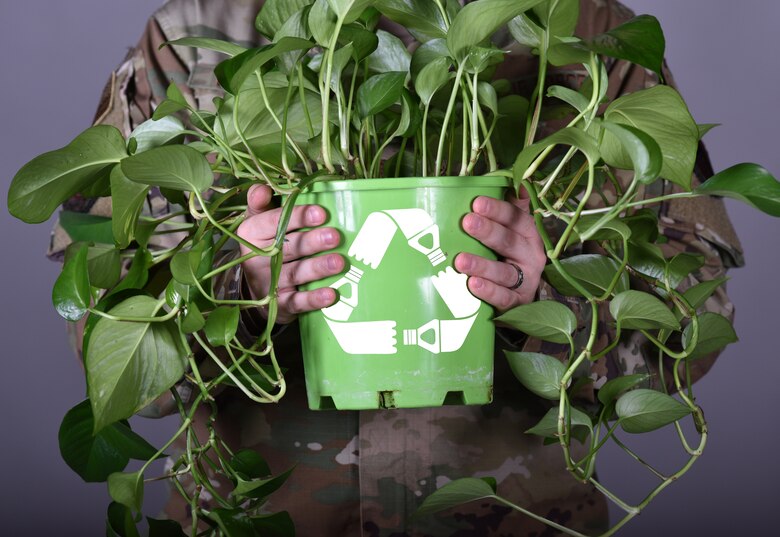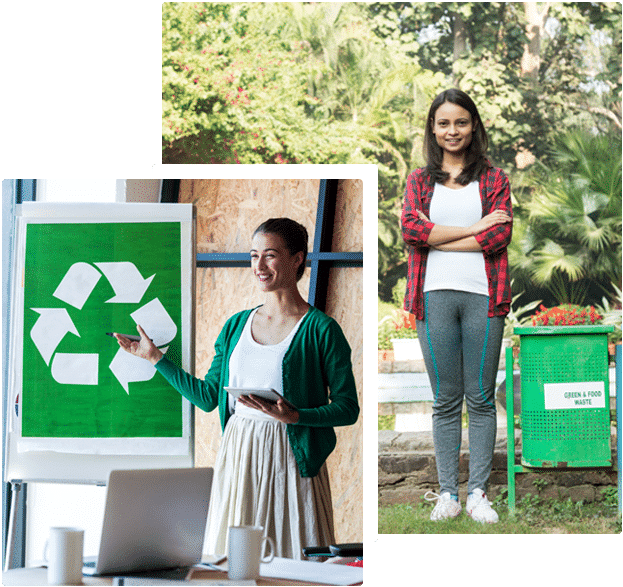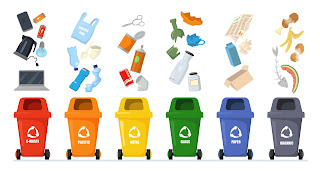Recycling- How it works and Helps Environment
Recycling is one of the best ways to treat waste management which affects the world in which we live. Plastic items, waste food, polystyrene etc releases harmful chemicals and gases which have an adverse effect on environmental sustainability. For example; there are many problems associated with plastic items. Marine animals are more affected by plastic items than humans beings. Problems related to ingestion of plastic waste or intake of chemicals that leads to their improper physiology. If you are reusing the waste products instead of throwing away in sea, ocean,lakes or any other area then you are actually recycling!

Concept of Recycling-
Recycling is just a creative concept. It can be anything from recycling old paper to a new paper, waste coke bottle (or any) to decorative lighting bottle. Recycling is important at large levels. Consumer goods are collected in bulk and then recycled to create raw material which are remade to create new products for the consumers.
How Recycling Works-
At very initial, the recycle bins are emptied where advanced technology is used to sort out the waste items. The big drum tumbles the waste and separate the fine materials like organic, soil, dust, food waste which would contaminate the recycled items. The recycling process for the different types of material is quite similar. Let us understand the recycling process with an example. Let us take Plastic
Recycling Process-
Plastics- Quick process of recycling Plastic-
1. Collecting
2. Sorting/filtering
3. Cleaning and washing
4. Resizing
5. Separation
6. Compounding
Collecting- The first step in recycling is to start collecting the plastic that is to be recycled. The plastics present in trash bins is avoided; and if not, the fine materials are separated from the plastic to prevent contamination. Majorly, the plastics are collected from business organizations, home, education institutes, etc. For that, the government started recycling collection system that goes to people and collect unwanted plastic items.
Sorting- After the plastic is collected through recycling collection system, it is sorted. The plastic is sorted in a variety of ways. The plastics are sorted on the basis of color, material used, the way it was made.
Cleaning/washing- After the plastics are sorted precisely, the next step is to clean them. In this step the plastic is washed. The only purpose to clean plastic is to remove impurities for the further process.
Resizing- This process consists of granulating the plastic into small particles. This process is considered to be the final opportunity to remove the non plastic materials. A metal detector is used to remove the unwanted material from the mixture.
Plastics- Quick process of recycling Plastic-
1. Collecting
2. Sorting/filtering
3. Cleaning and washing
4. Resizing
5. Separation
6. Compounding
Collecting- The first step in recycling is to start collecting the plastic that is to be recycled. The plastics present in trash bins is avoided; and if not, the fine materials are separated from the plastic to prevent contamination. Majorly, the plastics are collected from business organizations, home, education institutes, etc. For that, the government started recycling collection system that goes to people and collect unwanted plastic items.
Sorting- After the plastic is collected through recycling collection system, it is sorted. The plastic is sorted in a variety of ways. The plastics are sorted on the basis of color, material used, the way it was made.
Cleaning/washing- After the plastics are sorted precisely, the next step is to clean them. In this step the plastic is washed. The only purpose to clean plastic is to remove impurities for the further process.
Resizing- This process consists of granulating the plastic into small particles. This process is considered to be the final opportunity to remove the non plastic materials. A metal detector is used to remove the unwanted material from the mixture.
Identification and Separation- in this procedure the plastic is tested on the basis of its quality, color, and melting point and then separated accordingly.
Compounding- Compounding is the final step of Plastic Recycling. Compounding is when small particles are smashed, melted and then converted into a plastic pellets.

How recycling helps the environment-
Reduces the Landfill Waste- One of the most notable yet beneficial factor recycling is that it reduces the waste reaching the landfill. According to recent research, the landfill is filled with the following waste-
a. 21% food
b. 18% plastic
c. 10% leather, rubber, textile
d. 14% paper
With increased recycling efforts and actions, the process can further reduce landfill waste in upcoming years.
Saves and Protect Wildlife- We forget the consequences of throwing waste food, plastic bottles, sandwich wrapped with plastic into lake, ocean, pond. We don’t have any idea that the consequences are faced by the wildlife. The ocean is full of wildlife with beautiful ecosystem. Throwing waste food, plastic items becomes the reason of their death. By continuing the recycling, we can make sure less death causes of wildlife.
Reduces the Pollution- Recycling reduces the pollution in many ways; but avoiding Incineration came out to be the most effective one. Implementing Incineration is not an ultimate recycling process. It pollutes air and promotes human respiratory infection by 6 times. Continuing recycling will reduce the pollution in upcoming years.
Compounding- Compounding is the final step of Plastic Recycling. Compounding is when small particles are smashed, melted and then converted into a plastic pellets.

How recycling helps the environment-
Reduces the Landfill Waste- One of the most notable yet beneficial factor recycling is that it reduces the waste reaching the landfill. According to recent research, the landfill is filled with the following waste-
a. 21% food
b. 18% plastic
c. 10% leather, rubber, textile
d. 14% paper
With increased recycling efforts and actions, the process can further reduce landfill waste in upcoming years.
Saves and Protect Wildlife- We forget the consequences of throwing waste food, plastic bottles, sandwich wrapped with plastic into lake, ocean, pond. We don’t have any idea that the consequences are faced by the wildlife. The ocean is full of wildlife with beautiful ecosystem. Throwing waste food, plastic items becomes the reason of their death. By continuing the recycling, we can make sure less death causes of wildlife.
Reduces the Pollution- Recycling reduces the pollution in many ways; but avoiding Incineration came out to be the most effective one. Implementing Incineration is not an ultimate recycling process. It pollutes air and promotes human respiratory infection by 6 times. Continuing recycling will reduce the pollution in upcoming years.

How to Increase Environmental Sustainability-
Say No to Straw- To maintain the environment sustainability; don’t just wait for others to initiate. It starts with you! If you go to the cafe, avoid taking straws. Straws are used only once & they are ready to dispose. The straws are made from Polypropylene which degrades the environment sustainability.
Repurpose Branded Merchandise- There are many organizations in the USA which helps you in getting rid of unwanted branded items. Many companies organize events, conferences, meetings where they use branded merchandise. There is no use such branded items after such events. Thus, company find methods to get rid of such items. The NGOs help companies repurpose and recycle the items in an ethical and affordable way.
Plant a Small Garden- To maintain environment sustainability nothing can be better than planting a small garden in your yard. Planting some privacy hedging plants can act as a natural fence and encourage environmental sustainability.
Go Paperless- Avoid excess use of papers, documents. Instead go for online transactions to pay bills, book tickets for movies, trains,flight. Again this is a great initiative go maintain environmental sustainability.
Join a Community- There are communities in the USA whose main concern is to promote environmental sustainability through recycling, repurposing, donating and land filling. Joining communities can affect the environment in a positive way.
Recycling and waste centre-

There are many NGOs like SwagCycle in the USA who provides facilities to bring recycling material, unwanted branded merchandise for disposal, recycling and even for donation. There is no use of used branded merchandise after big events, conferences; such NGOs takes used branded merchandise and give them in charity. So, it’s better to donate swag instead of throwing them.


Comments
Post a Comment